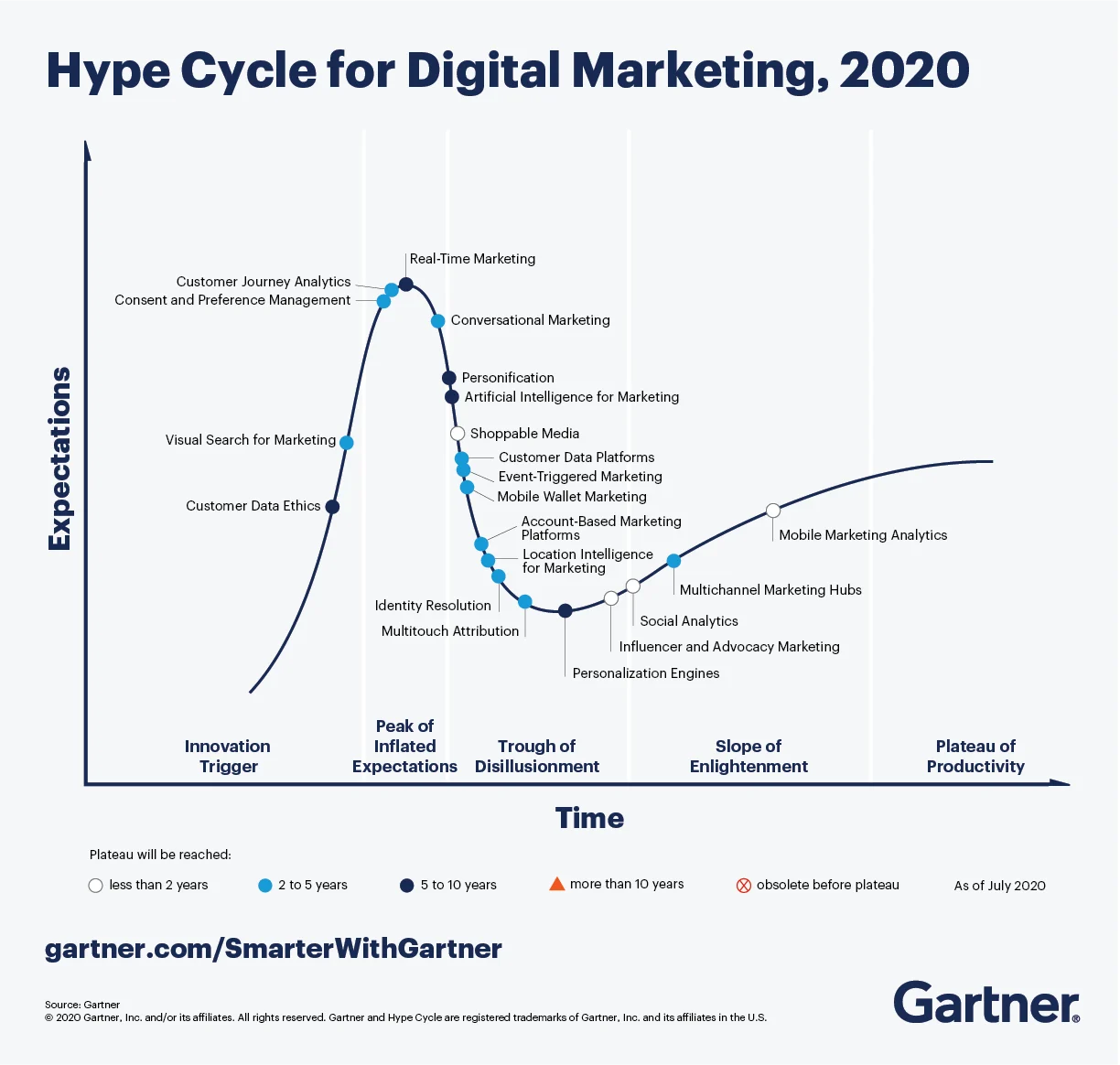- Personalization
Personification the Underestimated Sister of Personalization


While personalization based on third-party scripts has been the mainstream practice across the digital marketing boards of all industries for the longest time now, personification has been taking a backseat.
We can portray personification as the overshadowed, equally smart but more reserved sister —standing in the shadow of personalization that clearly has been every digital marketer’s darling forever and a decade.
In turn, for the uber-popularity personalization has been enjoying in digital marketing departments worldwide, it has, however, been received as slightly nosey by the general public and even deemed intrusive by privacy advocates.
Gartner’s most recent hype cycle confirms what we at Ninetailed have been passionately practicing for a while now: it seems that at last personification’s time to shine has come.
Personalization versus Personification – How to Tell Them Apart
Despite the clear distinction Gartner and others have been providing, it is safe to say that within the vocabulary of marketers, there are still fluid boundaries in the differentiation of personification versus personalization.
Confusingly, these terms are sometimes even used synonymously.
In order to contribute toward a more precise understanding of what personification means today, we start out by paying tribute to earlier definitions of the term and the concept behind it.
Summing up the ambiguity to Johan Belin, personalization in the realms of marketing has been connoted in the past either as:
a) “marketing that is based on the user’s personal data” (i.e., handling personal data)
b) “marketing that is targeting specific demographics and/or personal preferences” (i.e., not handling personal data).
Belin points out, that Gartner’s clarification, that b) should rather be referred to as “personification” than still share the umbrella term “personalization” solves this confusing polysemy. In a nutshell, he sums personification up as “targeted marketing that doesn’t use personal data.”
More precisely, in 2015, Gartner discussed personification as “the delivery of relevant digital experiences to individuals based on their inferred membership in a defined customer segment, rather than their personal identity.”
In other words: according to this article, driven by data, however forgoing personally identifiable information, persona segments are being attributed. Thus the customer remains a little more anonymous, while framework preferences are still noted.
Personification, therefore, puts the (potential) customer back into the driver’s seat of deciding and dosing to which degree of familiarity they want to be greeted and treated in further interactions with the particular brand.
It is thus fittingly proclaimed to be bridging “the gap between broad-reach branding efforts like content marketing and true 1-to-1 interactions, which should always be under the control of the customer.”
Hype Cycle Confirms: Personification Continues to Trump Personalization
According to Gartner’s most recent Hype Cycle for Digital Marketing (2020), which is mapping the status quo of each relevant digital marketing trend, personification is again pointed out as up and coming.
In contrast, personalization engines are portrayed to be at the bottom of the Trough of Disillusionment (see graphic below). However, it is noteworthy that both are deemed to reach the plateau after peak hype and subsequent deflation within the next 5-10 years. However, personalization engines are supposedly a lot further ahead in this development.

Gartner’s notion is in tune with generally notable developments regarding marketing ethics and privacy concerns of a growing number of users: by far, not everybody reacts happily when being addressed by full name when re-visiting a website, despite having given consent in the spur of the moment without an in-depth understanding of what exactly it entails.
Several studies have documented that loading times and thus fast access to websites matter a lot to internet users. Therefore hasty “OK” and “Accept all” confirmations are routine day-to-day life decisions without much afterthought for many of us.
This is a paradox because, at the very same time, privacy has become a growingly guarded priority by more extensive parts of society. Sometimes, even the very same users speedily give all-encompassing consent without genuinely knowing what exactly it is that they are accepting that are the ones protesting the loudest once they discover the consequences.
GDPR and CCPA were logical consequences of legislative attention being paid to the growing societal concerns, arranging for more restrictive practices in digital marketing without forcing the users to further emancipate themselves by educating themselves on best practices and actively researching the details behind every confirmation click when browsing onto a new website.
How We See Personification at Ninetailed
While the process of coining the term personification is still ongoing, we have previously referred to pre-existing notions and definitions.
At Ninetailed, we are also still developing and further deepening our understanding of personification. For us, personification is user-centric: our goal is to improve the UX.
With particular respect to the users’ privacy and freedom of choice, we allow for a real-time experience of adaptive content, addressing their personas, not them as an individual – which in our case is even possible without the need of getting the users’ consent since they are not becoming data points.
With reference to the maturity pyramid below, we do not aim to reach the tip, namely hyper-personalization at a one-to-one level at all costs - hyper-personalization needs to make sense for the user.
Learn how to deliver unique and personalized customer experiences to increase conversions
